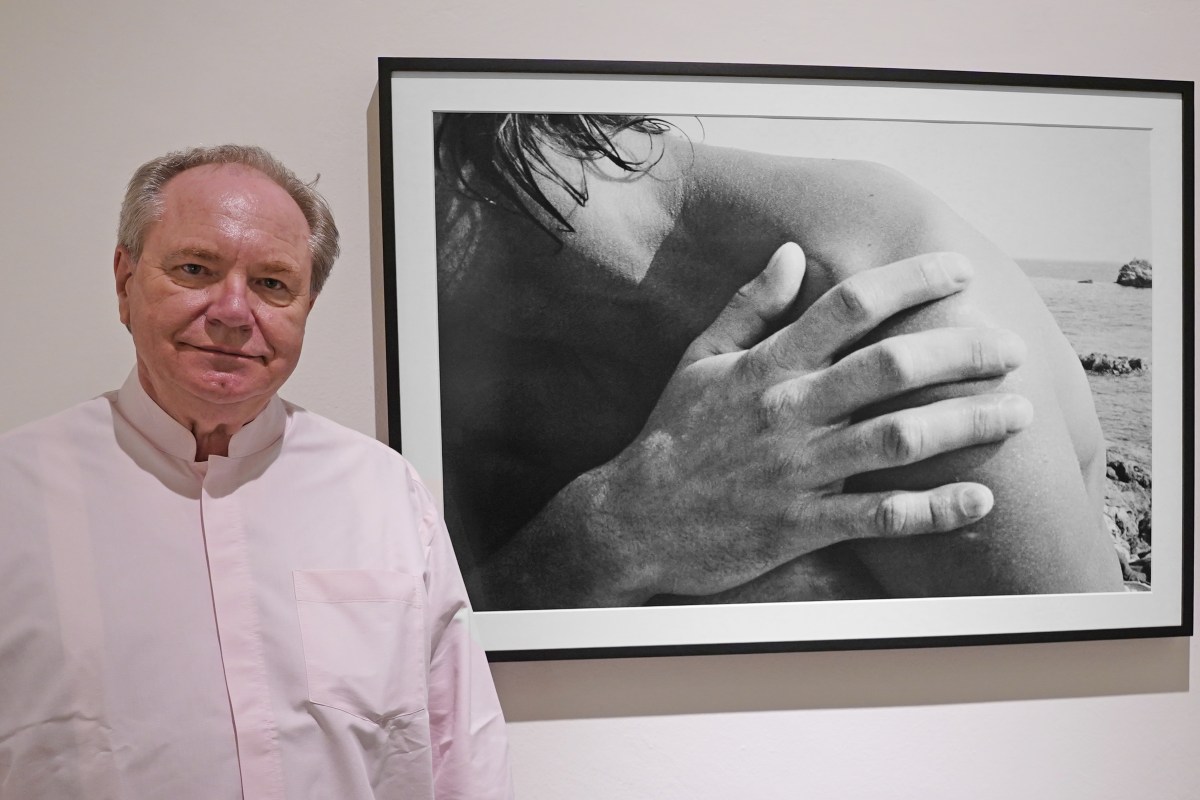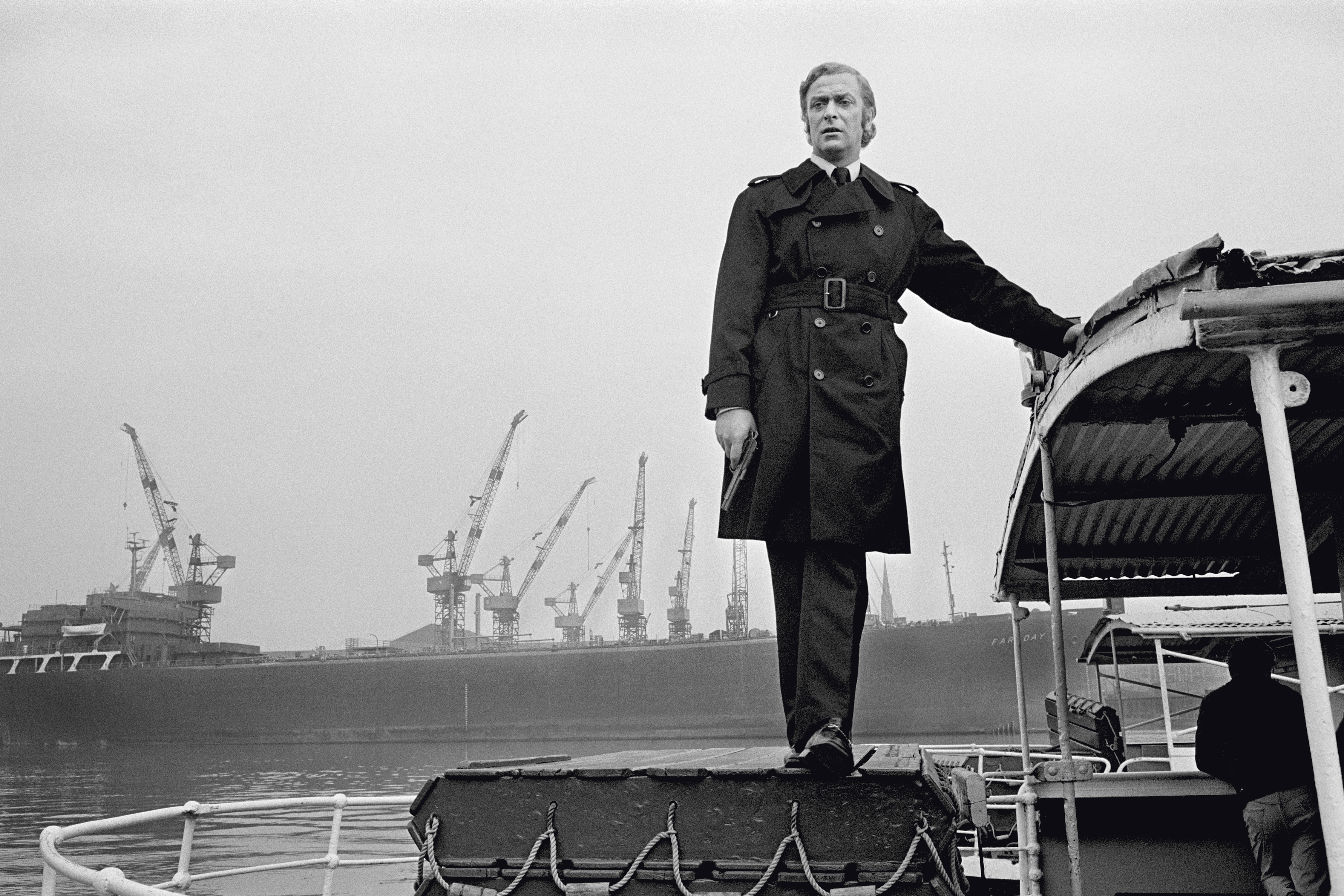Hans Georg Berger doesn’t care much for the idea of taking photographs. “I don’t want to ‘take’ photographs,” says the 71-year-old German photographic artist. “I want the photograph to be given. I think that’s probably the most unnerving part of my process for the subjects — all the waiting until they finally give in and say ‘C’mon, when are you going to do this photo?!’”
If the distinction between “taking” a photo and being given one through the deliberation of its subject may at first seem like pettifogging, Berger — whose images are found in the permanent collections of major institutions around the world — has found his niche in the history of photographic art precisely by being collaborative in his approach. “Getting photographs is not really the aim,” he says. “The aim is to use photography as a wonderful means of achieving the results I wanted to achieve firsthand, which is to use the camera as tool of intimacy and love and exchange.”
Rather than taking a purely documentary or cooly distanced view of the people in his photos, instead Berger sees the process of making his photos — perhaps their photos is more accurate — as the start of a conversation. He follows the subjects’ lead, shares the images with them, has long discussions about the images with them, makes them — months later, after developing the film — part of the editing of the huge contact sheets.
“What you end up with are images that have more power, I think, than if they were an expression of just my impression of things perhaps alien to me to me as a foreigner,” explains Berger, whose best-known and arguably most immersive portraits are of Buddhist monks in Burma and Shiite clerics in Iran. “Certainly that means images get rejected by the subjects all the time. And when I ask why it seems to them wrong in some way, you quickly find yourself discovering that people from a very different culture than my own have a different aesthetic of photography too. Buddhist monks, for example, have a different feeling of time, of conservation and tradition, of renewal.”
One monk once referred to Berger as “the learning photographer” — a moniker borrowed for the title of Berger’s latest exhibition, an overview of his career at Milan’s 29 Arts in Progress Gallery (until July 16), with “Hans Georg Berger” an accompanying monograph. Certainly one thing Berger has learned through his process is that the typical standpoint of the keepers of the Western artistic canon — that theirs is superior to artistic traditions just as sophisticated and often much older — “is a pretty stupid starting point.” It has even led him to the disappointing conclusion, through various university positions he has held, that the West and its students are losing both their tradition of respect for learning and “a readiness to listen.”
“I hope this will change for us because it’s so necessary to open up one’s mind. If we continue to think that we have the answer for everything then we’re really wrong,” Berger adds. “Young people aren’t less intelligent than someone my age, of course — this is a cultural behavior and things change. But the more we in the West look to the cultures, the more we understand how important they are to our world and for our knowledge. They’re models that can help us.”
Berger says he has rather huge doubts as to the power of art to change the world. “I always think it’s funny that when there are major conflicts, when nobody can talk to each other, that’s the only moment when culture comes up, and [typically then] it’s an indication that all the other lines of communication — business, politics — have been abandoned,” he says with a chuckle. “By the time there’s talk of sharing culture, relationships are at a very low point.”
But his 50 years of photography have at least convinced him of the potential for photography to be a bone fide means of deep communication and exchange, between people and between peoples. “When I’m among people often very different to myself just to ‘click’ and then leave would seem to me to be the silliest way of doing things, when in contrast you could ask someone there to join you in accepting photography as a serious way of coming together,” he explains. “Sure, because today images are so easily used and misused to other ends, you meet skepticism. But I’ve usually found that can be overcome.”
Berger speaks from youthful experience on the personal impact too: then director of the Munich Theatre Festival, Berger discovered photography in the late 1970s through his relationship with the French novelist and journalist Herve Guibert, when they both took up the same model of basic Rollei 35 camera, with the same kind of film, and for 12 years took photos of each other around the clock “as a way of developing a language between us that nobody else shared,” says Berger.
Guibert, who died in 1991, would go on to be a pioneer of photography criticism for the French national press — really helping to drive consideration of photography as an art form across Europe and then internationally — and two years ago Berger finally published his photos of him. Due to various reasons regarding copyright and the management of Guibert’s estate, sadly his photos of Berger remain unpublished.
“Herve and I had this constant conversation about photography — what is it, what it’s for — that concentrated in our work, and I thought at least my part needed to be published,” says Berger of the resulting book Phantom Paradise. “It’s really only half of the project. But it’s the first step.”
That remarkable interplay of mutual portraiture didn’t, however, leave Berger fixated on the human alone. Having come to fully appreciate the technical availability to all of the camera — “of course you then have to develop your art, but it’s much more accessible than, say, learning to paint,” Berger says, laughing — it’s hard to imagine him restricting his palette to people. And, indeed, his wider body of work encompasses equally penetrating still-life and landscape imagery — appropriately so for someone who, as a keen amateur botanist and keen mathematician, has established gardens and founded multi-disciplinary art and science centers.
That imagery, he suggests, might even be a product of the same collaborative approach he has taken with his portraiture. Can you collaborate with a landscape? “I think you can,” answers Berger. “You can encounter an abandoned monastery, say, much as you can encounter a person — as a process of discovery — so that the place becomes part of your life as a person does. I’ve used my method to get closer to that place. You have to wait some time before a garden or the sea or mountains or ancient walls talk to you, but it does happen. You have to wait for the feeling that a particular photo makes sense. If you just take endless snaps you don’t see things anymore.”
This article appeared in an InsideHook newsletter. Sign up for free to get more on travel, wellness, style, drinking, and culture.






















